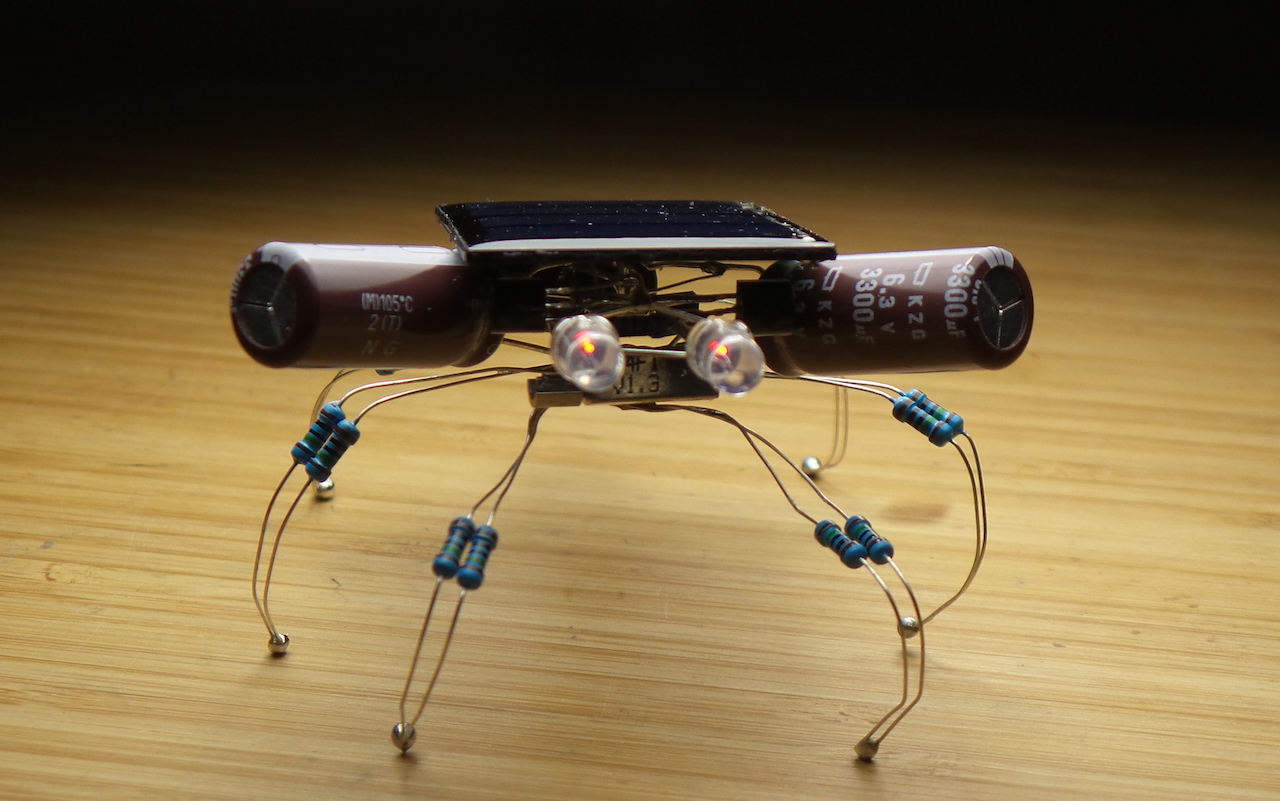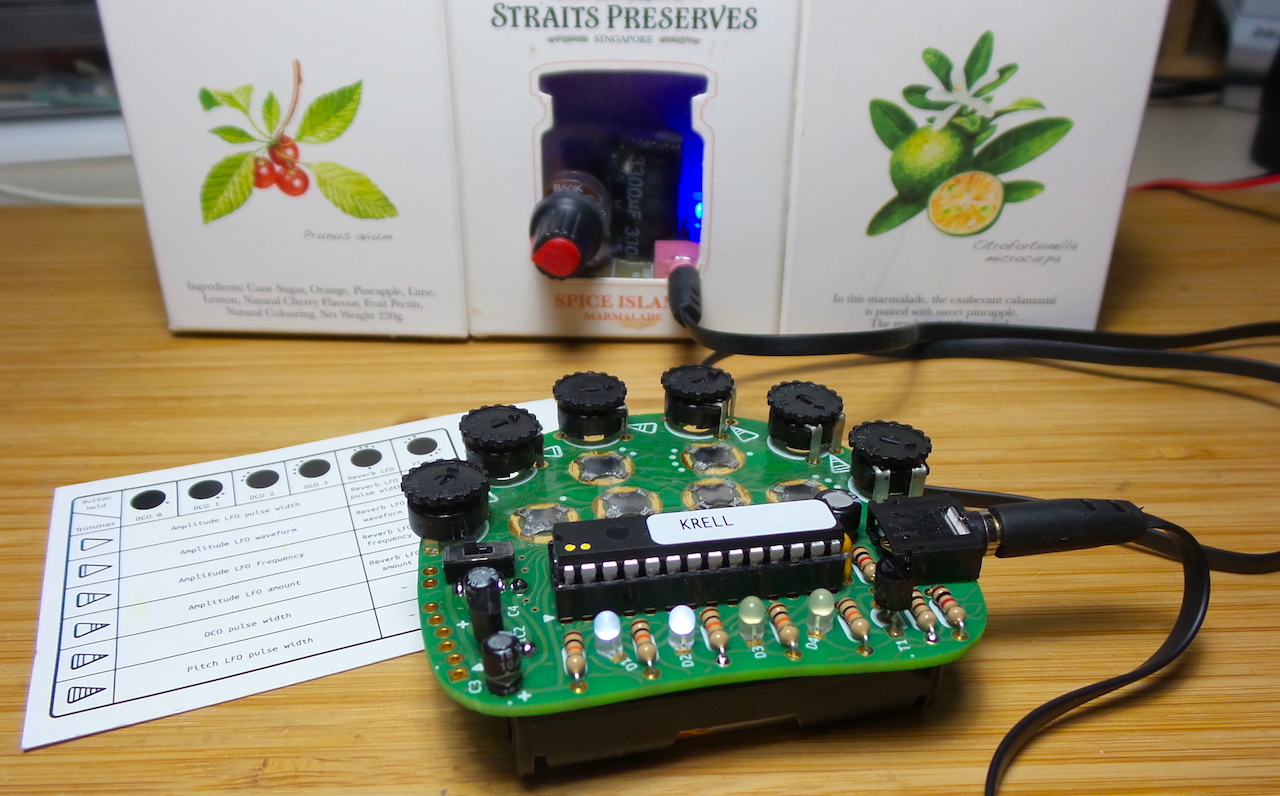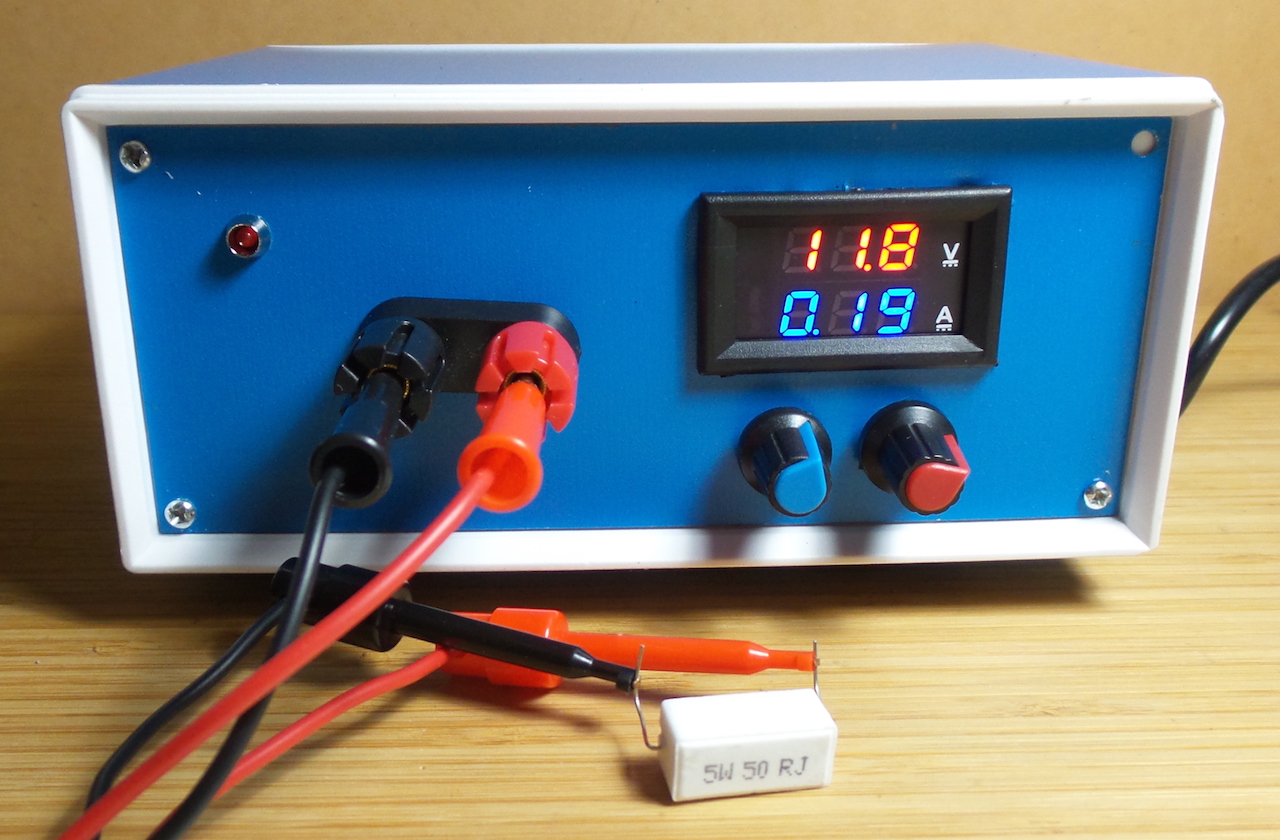LEAP#436 Vivian the Vibrating BEAM Bot
Whatever happened to BEAM robotics? Perhaps it was just a 90’s fad, now rendered irrelevant by cheap microprocessors. But just as we still enjoy tinkering with 7400-series logic, old and irrelevant technology has a special attraction for some;-)
And it turns out that these days there are some new tricks - such as using the QX5252/YX805 solar LED driver to boost the output of the photovoltaic cell (it’s like a joule thief in a TO-94 package).
“Vivian” is the result of my first experiments: a solar-powered jumping vibrobot that employs a classic FLED solar engine circuit with a QX5252 boost converter.
As always, all notes, schematics and code are in the Little Electronics & Arduino Projects repo on GitHub.
Here’s quick video of my first bench-top test:
read more and comment..
LEAP#434 Boldport Krell
The Krell is a handheld DSP synthesiser, with Buttons and potentiometers dial up a range of sounds. The Boldport project is a typically beautiful remix of a soldering project by James Hutchby of MadLab.
At the core of the circuit is a Microchip dsPIC33EP128MC202-I/SP. It’s an interesting choice - a digital signal controller that is really designed for precision motor control, now put in service of creating music (or at least weird sounds).
This project also features Snaptron buttons preset on adhesive backing. Instead of soldering, they just stick down as a single array. I can imagine this being a very efficient approach for small batch assembly.
As always, all notes, schematics and code are in the Little Electronics & Arduino Projects repo on GitHub
My first sounds of Krell..
read more and comment..
LEAP#433 0-30V/3A Adjustable Power Supply Kit
The 0-30V/3A Adjustable Power Supply Kit at the heart of this build will no doubt be instantly recognisable to anyone familiar with the usual online electronics market places. It features continuously variable output voltage, and a variable current limit with overcurrent indicator/shutdown.
It appears the curciot design may have originated from SmartKit in Greece, been improved by various people, and at some point the “canonical design” was picked up for mass production (instantly identifiable by the red PCB and tall cap).
As always, all notes, schematics and code are in the Little Electronics & Arduino Projects repo on GitHub
read more and comment..
LEAP#430 Driving Scavenged Linear Steppers
CD/DVD drives are a great source of interesting scavenged components - in particular laser units and stepper motors.
I pulled some of the head control stepper motors some time back. They are small 4-wire bipolar stepper motors with a worm drive for linear motion. Datasheets are non-existent(!), so this is a little project to figure out their specs and demonstrate driving the units with an Arduino and bespoke H Bridge control circuit.
As always, all notes, schematics and code are in the Little Electronics & Arduino Projects repo on GitHub
read more and comment..



